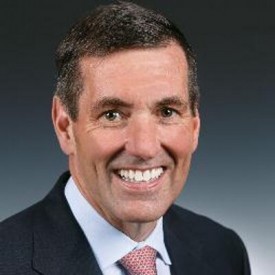Payer, Provider Collab, Home Health Key to Integrated Care
Providers and payers can implement holistic integrated care models by improving collaboration and home health, Humana CEO stated at AHIP’s Medicare conference.

Source: Thinkstock
WASHINGTON DC - The move to integrated care models that treat the whole individual, not just his medical needs, rests on payer and provider collaboration as well as linking healthcare and lifestyle, Humana’s CEO and President Bruce D. Broussard told attendees at AHIP’s National Conference on Medicare.
“The long-term state of affairs is in a few areas, including moving from an institution-based model all the way into the home and from a specialist-based to all the way down to primary care,” he said. “In the health insurance industry, it’s going to evolve from this managed care approach, where you are managing a network, pre-authorizations, network prices, product design, and all these things that are transaction-oriented to being a company where you are enabling integration.”

“Ultimately, the industry needs to move from managing transactions and friction points in the system to being an enabler to integrate both inside healthcare and inside lifestyle,” he continued.
However, the current fee-for-service landscape does not support the transition to integrated care that provides the right care at the right time, convenient care access, face-to-face encounters, and aligned financial incentives for providers.
“Healthcare is a tale of two cities,” he explained. “We’ve done a really good job with extending life and the ability of people to live beyond their 80s and being able to enjoy life. But it’s also putting great strain and stress on society because of costs.”
Healthcare costs are rising as individuals live longer because the system was built on an episodic model.
“When you think about the healthcare system today, it’s about treatment. It’s about serving an individual and trying to solve the immediate problem that he has,” Broussard stated.
The current episode-based environment aims to help patients get back to normal after an event. For example, a man gets into a biking accident and payers as well as providers aim to help the man mend his broken leg and resume his normal lifestyle.
This approach does not work for a growing population with one or more chronic disease. Getting back to normal for this patient population means managing their disease or diseases.
An integrated care model versus the transaction-based managed care model aims to help individuals manage their diseases by helping them stay away from healthcare services.
“Why do we want to focus on chronic members and why do we want to help them with their disease progression as well as manage them as soon as they hit the healthcare system. Because that’s where that move is from managed care to the integrated model. Moving from ‘I’m going to wait for them to get into the healthcare system and maximize that transaction’ to ‘How do I help them not to use the healthcare system,’” Broussard explained.
Using this approach, the healthcare industry can significantly reduce healthcare costs. He elaborated that a diabetic with high severity averages about $4,000 in healthcare costs versus just $613 for a diabetic with low severity.
Health plans may spend up to $500 million in unnecessary costs by neglecting to prevent expensive, adverse healthcare events for this patient population.
“If I could help that individual prior to him hitting the healthcare system, I make a better life for them, a better business model for Humana, and a better outcome for society,” he said.
Unfortunately, the friction points created by the episode-based healthcare landscape prevent providers and payers from supporting chronic disease management and holistic care methods. Friction points include prior authorizations that slow care delivery, call transfers when individuals seek care, and complex network directories that prevent consumers from understanding their plan benefits.
To break down fiction points and episode-based care, Broussard suggested that providers are the link.
“The provider, specifically primary care, is an important part of healthcare,” he said. “How can we dig deeper with relationships and be productive in helping them evolve from a fee-for-service to more value-based reimbursement.”
Payers can help providers to implement an integrated care model by “not only extending a contact, but sending processes and people to assist with that transition.” Providers will also need payer assistance in the form of technology, human resources, and alignment of payment, he added.
Additionally, payers should emphasize home care to move the industry to an integrated care model, Broussard suggested.
“People who have chronic conditions, a lot of what is expressed to them and happens to them is at their home,” he said. “If they are working, it’s in their work. Being able to help them maintain their lifestyle is also part of the journey.”
Integrating healthcare with lifestyle is critical to helping individuals stay out of the healthcare system and managing their conditions at home.
“The home, pharmacy, and behavioral health are important parts of that integration,” he stated. “If you look at the investments we are making in our healthcare service business, it is all around how do we evolve those aspects.”
Broussard explained that Medicare Advantage plans are the best opportunity for payers to create an integrated care model.
“Out of all the industry payment mechanisms, Medicare Advantage aligns a lot of different incentives,” he said. “It provides the ability to take a holistic view of an individual.”
Since individuals choose Medicare Advantage plans, payers are incentivized to offer competitive plans that treat the whole individual at an affordable price.
“We have to have the best customer service and the best product out there from a cost point-of-view,” he said “We have to be innovative and that competitive nature because of the individual.”
Remaining competitive in the healthcare marketplace will depend on payers and providers shifting away from maximizing transactions to maximizing lifetime value of healthcare.
